The key though is knowing which canes are the right ones. Bamboo culms (they're typically called "culms" when still attached to the living plant, but "canes" when they're cut and removed) may seem quite strong right away, but it takes time for them to harden and strengthen.
The trouble is, Mother Nature doesn't care how old your bamboo culms are when she dumps the snow or ice storms on your plants, and damage can occur. Bamboo culms are very flexible and will typically bend to the ground, springing back after the snow or ice melts, but some will break.
Although this damage happened several weeks ago, I only noticed the other day. One clue was the downward-pointing culm:
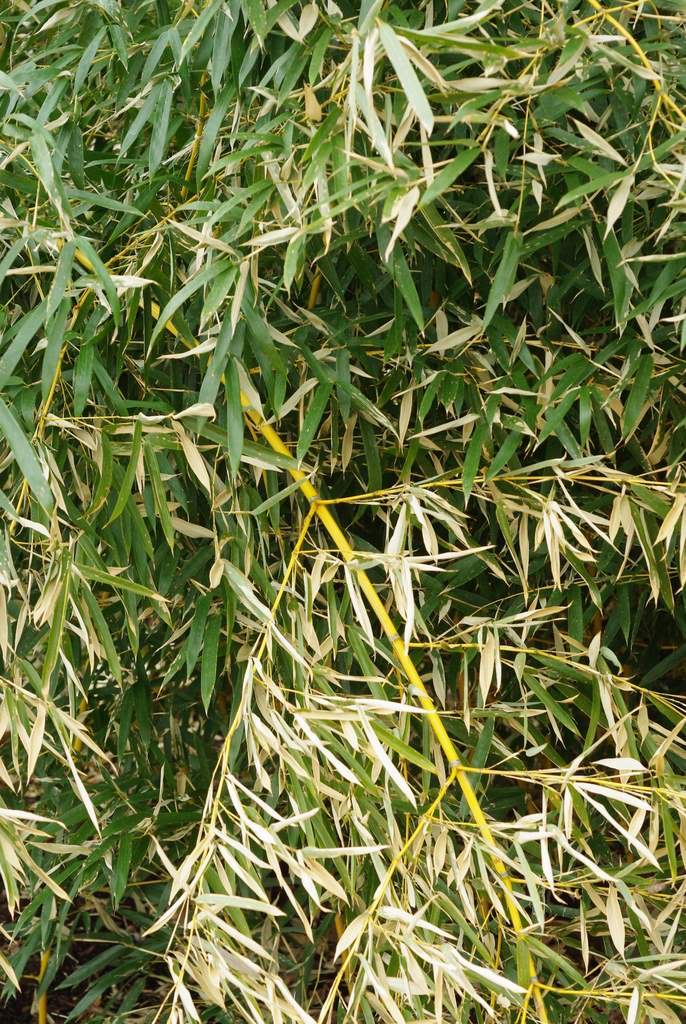 |
| This culm is pointed the wrong way. |
On another plant there wasn't any folding -- the top portion just snapped right off:
The culms are still susceptible to this when they're thicker too, so it's not something that the plant will outgrow. Because the larger culms are taller with more branches and leaves, there's more surface area for snow and ice to stick to, resulting in more weight. So big culms will bend from snow loading (and possibly break) just like the smaller ones.
I should mention that all of the broken culms I've found on my plants are one year old. That could be luck or it could be that the older ones have strengthened enough to avoid breaking. I'll have to keep an eye on this in future winters.
Here's another type of damage that I'm seeing a lot of this year:
I'm pretty sure this is from some animal scratching, rubbing, or gnawing the culms.
It's always on the outermost culms, on the outward-facing sides.
The likely suspects are deer, squirrels, or cats, or it could be some other animal. Maybe it's not an animal at all, but it seems to be the most probable theory.
I can't see any obvious tooth marks, but there are some pretty deep gouges in places:
I don't think this causes any real harm to the culm, although it's ugly. Most of them show just patchy damage, but there are a couple of really severe cases:
I tend to think this is a "I'm really hungry and this is kinda green and sticking out of the snow so I'll give it a go" winter issue only -- I never saw this during the rest of the year. I don't remember seeing it last year either, at least not to this extent.
I'm just glad that there are plenty of unblemished culms to help hide the ugly ones:
That's why I feel the best strategy when you're up against herbivores in your garden is quantity. Have enough plants that losing one or two or some small percentage of them to a hungry rabbit (or deer, or woodchuck) won't be that big of a deal.
I've got plenty of bamboo that were not marred in this way, so I can shrug it off. If I had just a single bamboo planting with only a few culms, this sort of attack would mean war, and a garden is no place to wage a war.
Edit: We've discussed this over at BambooWeb, and the conclusion is that it is almost certainly damage caused by deer rubbing their antlers on the culms.
.

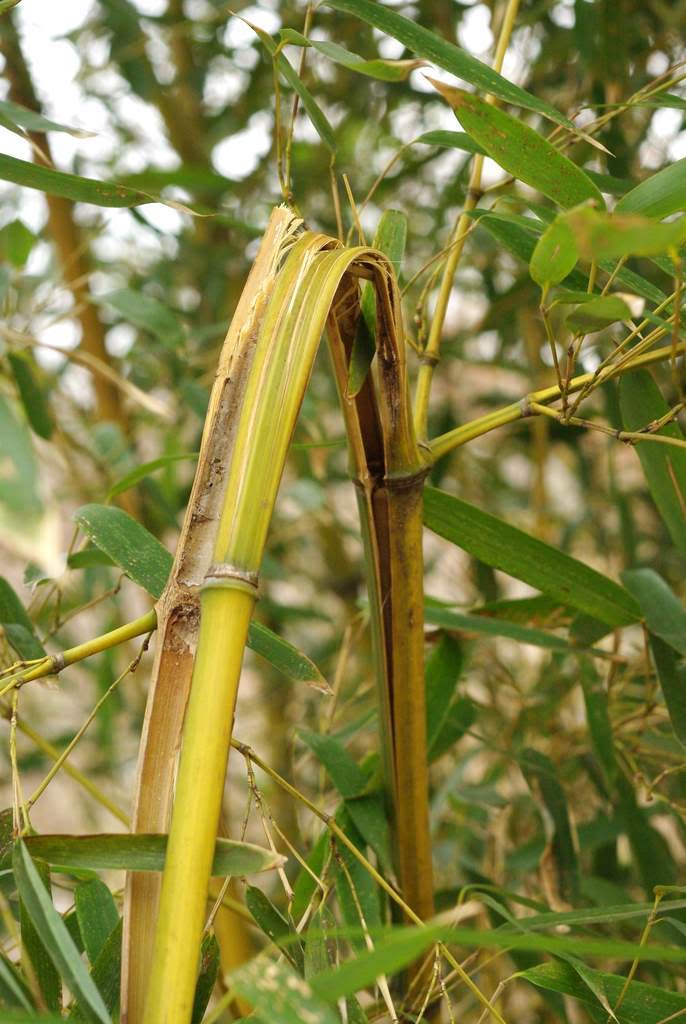
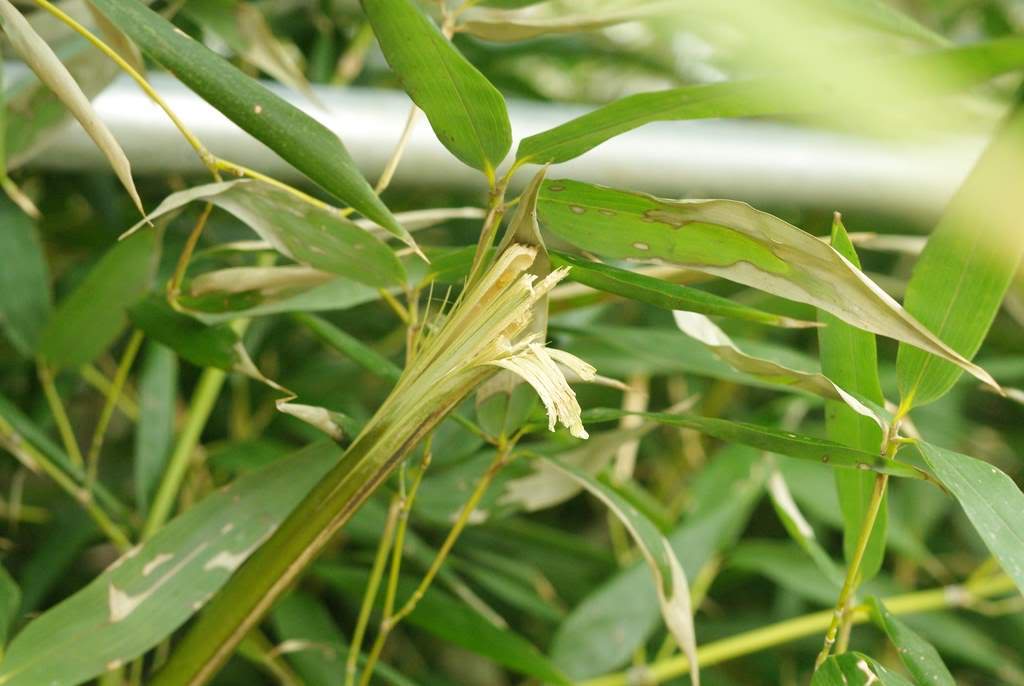
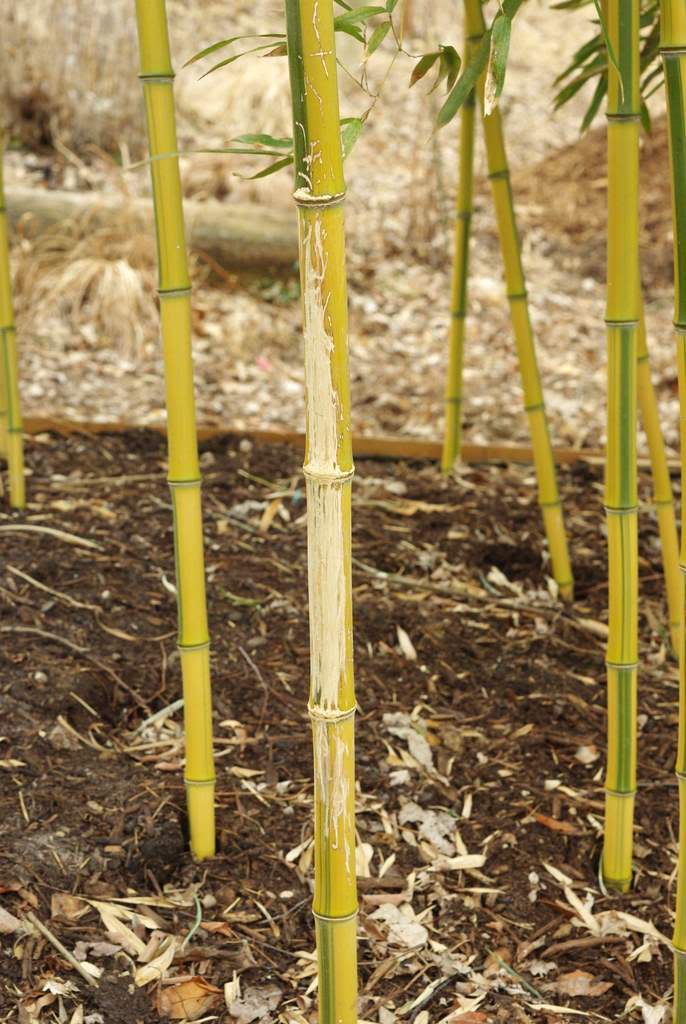
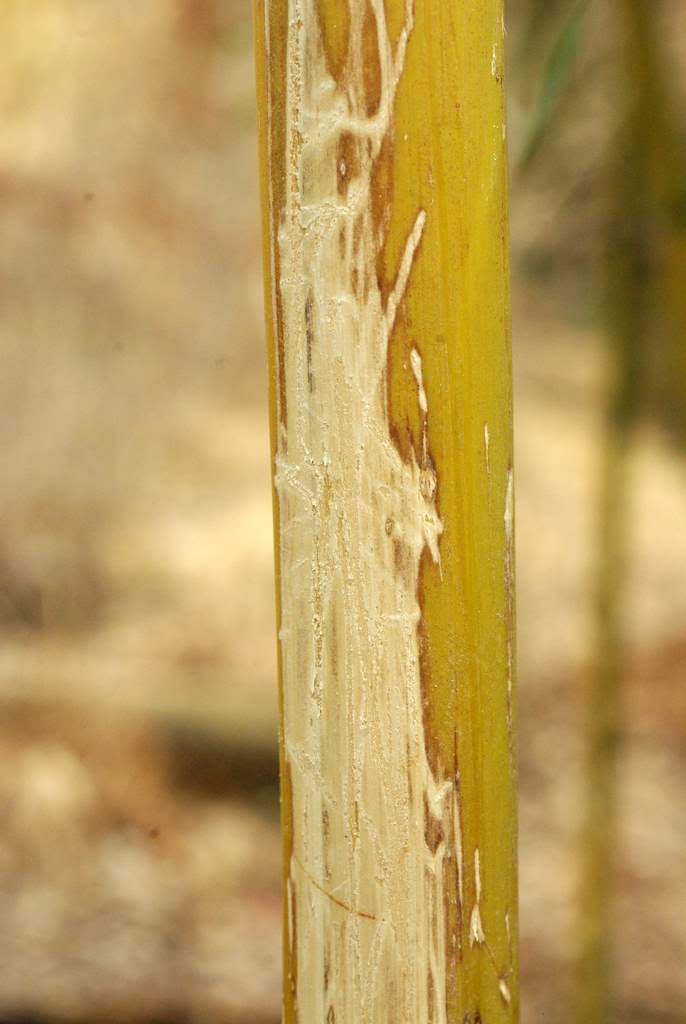
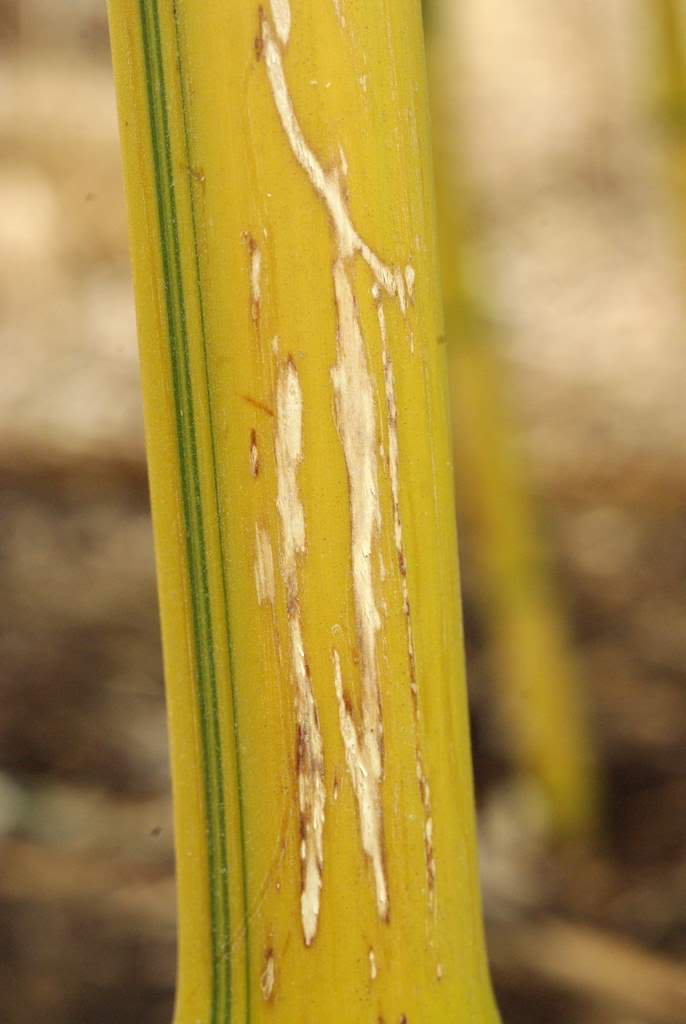
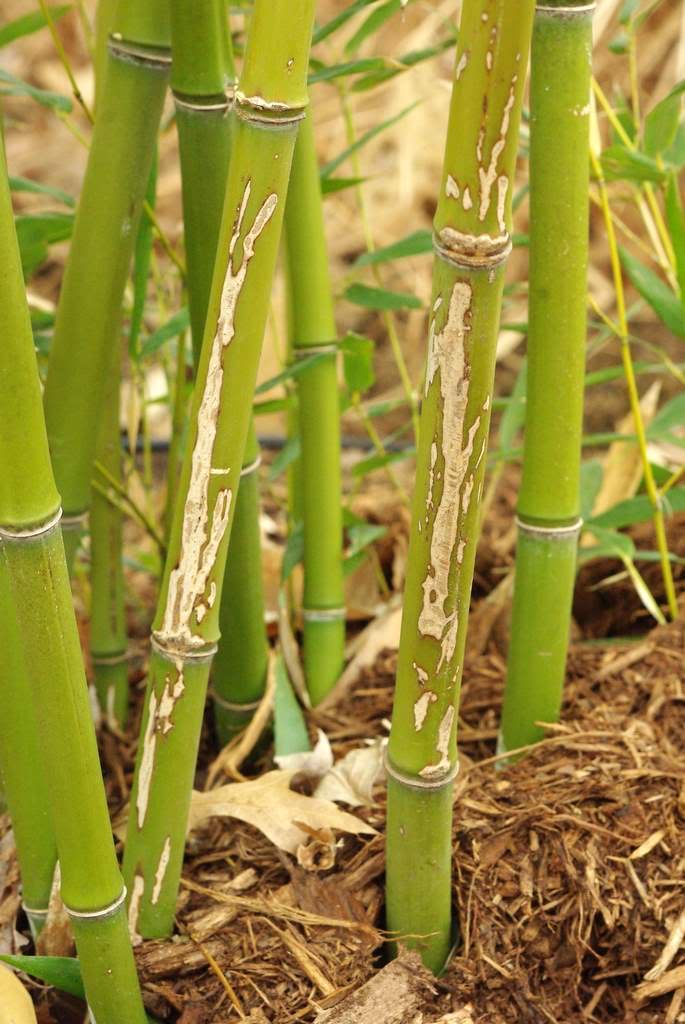
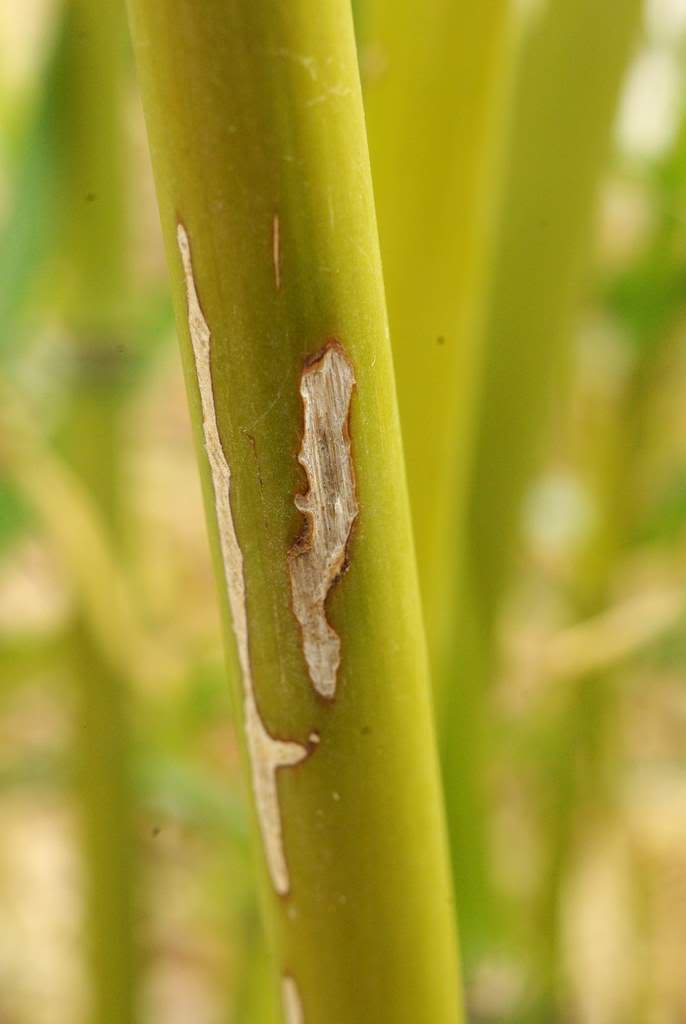
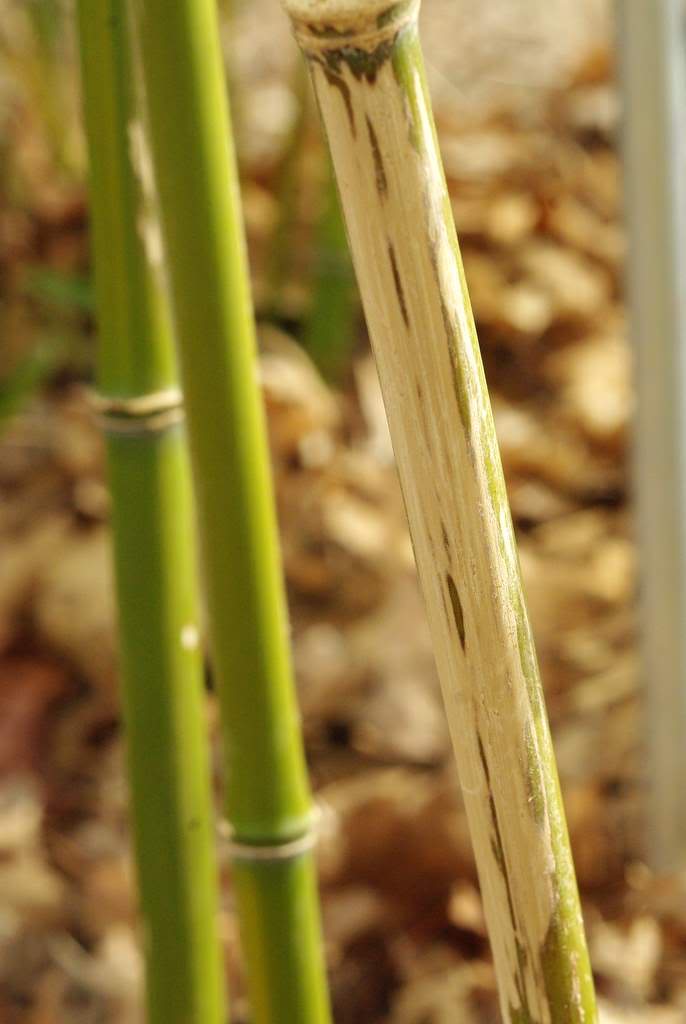
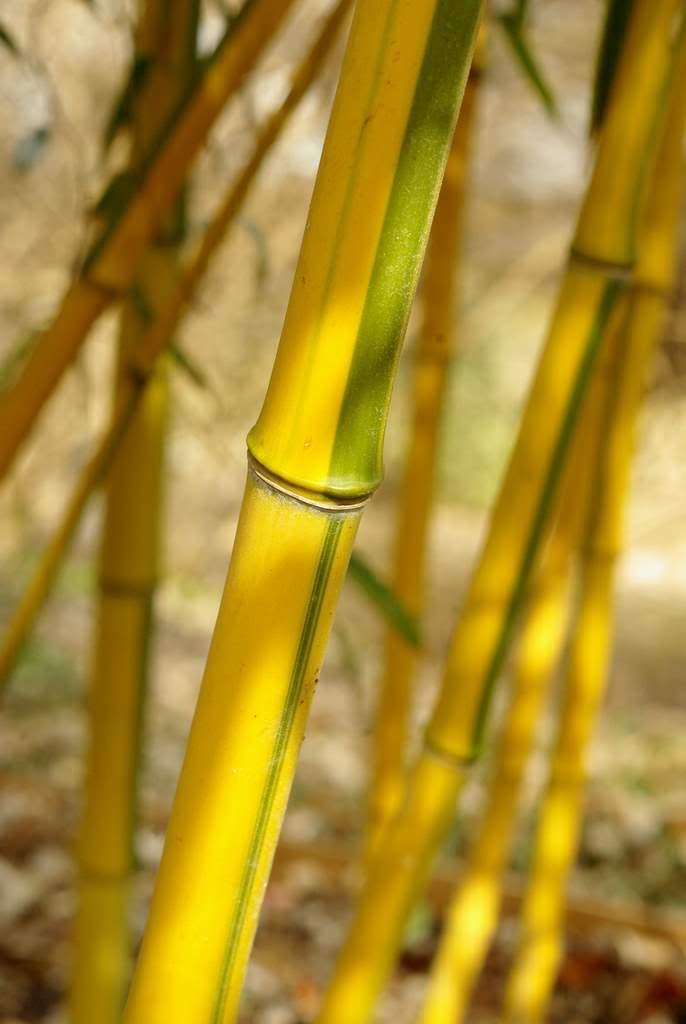
Very interesting Alan. I cannot wait to be able to see what the winter has brought to my stand of bamboo. You are right of course that the garden is no place to wage war, but for the rabbits that are taking over I would agree! Mine is a mindful war . . . trying to outsmart those critters.
ReplyDeleteVery informative! While I've never planted bamboo, I do enjoy it from afar.
ReplyDeleteCarol: sounds like you need a few hungry stray cats around your place. Check my posts under the "Super-Whitey" tag. Oh, and I'm pretty sure I saw a fox in my yard last evening at dusk. That probably helps too.
ReplyDeleteCarolyn: Not sure of your climate, but there's most likely a clumping bamboo you can plant and enjoy worry-free from up-close. =)
My largest atrovaginata culm got snapped by an ice storm a few weeks ago, and since it is still green, I tried repairing it hoping that there won't be any more major snowstorms so I can save it at least until after shooting season. The foliage heavy bamboos do keep lots of green over the winter however the drawback is that they are also prone to snapped culms which will be a bigger problem when they are upsized for next winter.
ReplyDelete